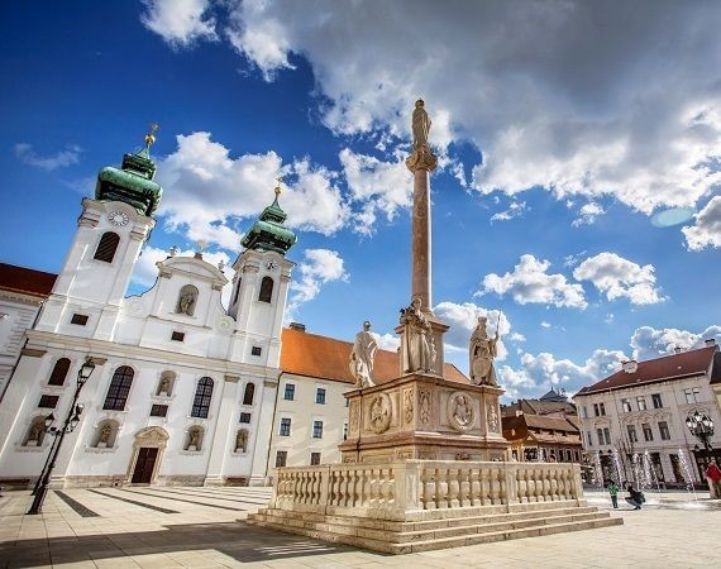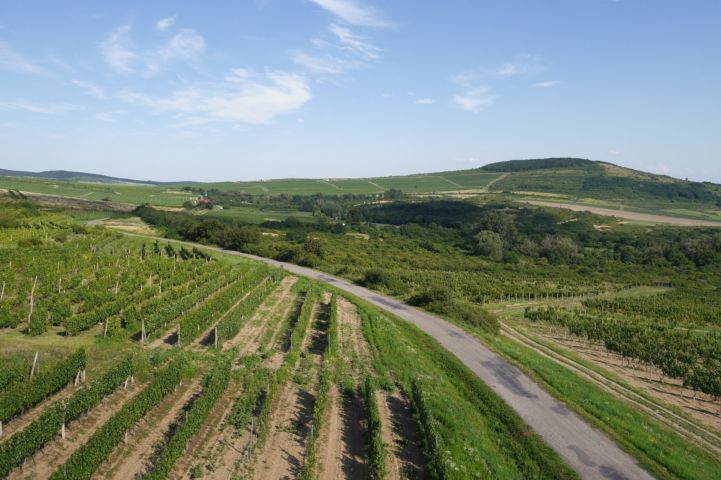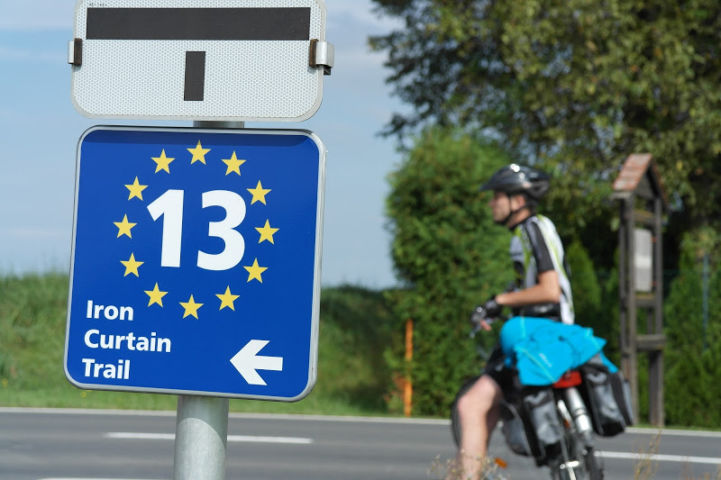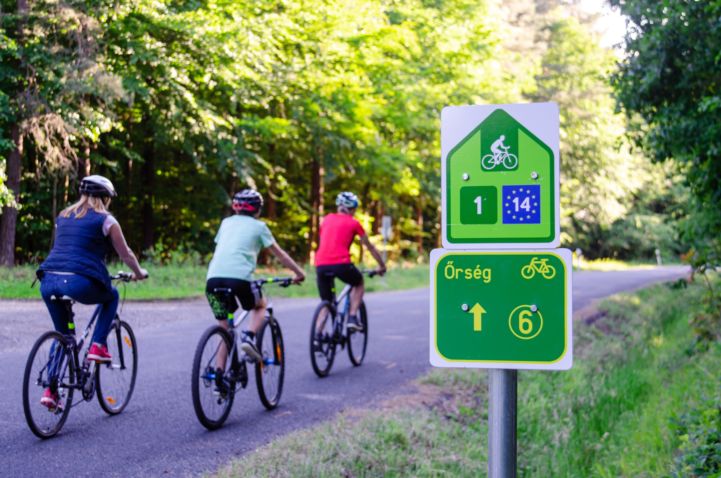Neue Plattform für die EuroVelo-Routen in Ungarn!
Die vom Ungarischen Radtourismusverband Maketusz verwaltete Website konzentriert sich auf die ungarischen Abschnitte dieser Routen und bietet eine Einteilung in Tagesabschnitte. Jeder Tagesabschnitt hat seine eigene Unterseite mit nützlichen Informationen für die Planung einer Radtour:
- Entwicklungsstand der Route (siehe diese Seite für weitere Informationen über die Kategorien der EuroVelo-Routen);
- Höhenprofil des Abschnitts;
- Höhepunkte entlang der Route, wie z.B. UNESCO-Welterbestätten, Kultur- oder Naturerbe oder kulinarische Spezialitäten;
- Bahnhöfe, Busbahnhöfe und Mobilitäts-Informationszentren entlang der Strecke, für einen einfachen Zugang zur Route mit öffentlichen Verkehrsmitteln;
- sowie ein Link zum Herunterladen der GPX-Tracks des Tagesabschnitts in der Beschreibung der Seite.
EuroVelo.hu enthält außerdem Links zu herunterladbaren Smartphone-Apps zur Navigation auf den Routen sowie Karten und Guides, die entweder heruntergeladen oder gekauft werden können. Sie finden eine kleine Auswahl an buchbaren Angeboten, wenn Sie sich lieber für ein Radtourenpaket in Ungarn mit oder ohne Tourenführer*in entscheiden möchten und den Aufwand sparen wollen, die Reise selbst zu organisieren.
Erfahren Sie weiter unten mehr über die ungarischen Sektionen des EuroVelo-Netzwerks!
EuroVelo 6 - Atlantik-Schwarzes Meer

EuroVelo 6 verbindet den Atlantischen Ozean mit dem Schwarzen Meer entlang von nicht weniger als sechs europäischen Flüssen, die den ganzen Kontinent umspannen. In Ungarn folgt die Route einer 500 km langen Strecke entlang der Donau und besucht auf ihrem Weg die Hauptstadt Budapest, einen der beliebtesten Abschnitte des gesamten EuroVelo-Netzwerks. Auf EuroVelo.hu finden Sie einen Vorschlag zur Aufteilung der Route in neun Tagesabschnitte, die alle gut ausgebaut und mit EuroVelo-Schildern gekennzeichnet sind.
Dieser Abschnitt der Donauroute weist keine großen Höhenunterschiede auf und beinhaltet viele Kulturstätten und größere Städte. Vom Dreiländergrenzpunkt Österreich-Slowakei-Ungarn führt er entlang der slowakischen Grenze weiter und durchquert das fabelhafte barocke Stadtzentrum von Győr nahe dem Fort Monostor - der größten mitteleuropäischen Festung der neueren Geschichte. Dann wendet sich die Strecke nach Süden entlang des alten Duna-Ipoly-Nationalparks und erreicht Budapest, die Stadt der Thermalbäder, auch Perle der Donau genannt.
Nachdem Sie das Panorama der innerstädtischen Flussufer von Budapest bewundert haben, die zum UNESCO-Weltkulturerbe gehören, führt Sie die Route weiter nach Süden in Richtung Kroatien und Serbien. Kosten Sie in den Kellern von Meleg-hegy einheimischen Wein, probieren Sie die ungarische Fischersuppe Halászlé und besuchen Sie den Gemenc-Wald - eines der größten Wildreservate Ungarns - bis Sie Mohács erreichen, die letzte ungarische Stadt auf EuroVelo 6. Sie ist berühmt für die Ausrichtung des Busójárás, eines lokalen Festivals, das in die UNESCO-Liste des kulturellen und spirituellen Erbes aufgenommen wurde. Wenn Sie sich für den ungarischen Abschnitt von EuroVelo 6 - Atlantik-Schwarzes Meer entscheiden, können Sie die Smartphone-App "The Danube Route" herunterladen (Android, iOS). Basierend auf den Daten, die während der Evaluierung der EuroVelo 6-Route gesammelt wurden, bietet Ihnen diese App viele nützliche Informationen, sowohl für die Planung als auch für unterwegs.
EuroVelo 11 - Osteuropa-Route

EuroVelo 11 ist eine gut ausgebaute, 500 km lange Strecke in Ungarn. Zwischen Sárospatak und Tokaj sowie zwischen Kisköre und Szeged an der serbischen Grenze ist sie sogar mit EuroVelo-Schildern ausgeschildert.
Die Route beginnt an der slowakischen Grenze, durchquert das Zemplén-Gebirge, bevor sie bei Tokaj den Fluss Bogrod erreicht, der dort in die Theiß mündet, einen der wichtigsten Flüsse Mittel- und Osteuropas. Tokaj ist auch für seine Weinregion bekannt, die 2002 vom UNESCO-Welterbekomitee als geschützte Kulturlandschaft eingestuft wurde.
EuroVelo 11 führt weiter entlang der Theiß und des riesigen Theiß-Sees bis nach Szeged. Machen Sie unbedingt in Kisköre südlich des Theiß-Sees mit seinem Sandstrand und dem flachen, warmen Wasser Halt. In Richtung der Stadt Szeged durchquert die Route den Ópusztaszer-Nationalerbepark, ein Freilichtmuseum zur ungarischen Geschichte. Von Szeged bis zur ungarisch-serbischen Grenze trifft EuroVelo 11 auf EuroVelo 13.
EuroVelo 13 - Iron Curtain Trail

Auch EuroVelo 13 ist in Ungarn knapp 500 km lang. Die Strecke besteht aus zwei Abschnitten: Sie führt zunächst von Fertőújlak bis Letenye entlang der österreichischen und slowenischen Grenze, und dann nach einem Abschnitt in Kroatien von Barcs bis Szeged entlang der kroatischen und serbischen Grenze. Die Strecke ist gut ausgebaut und mit EuroVelo-Schildern bis Mohács ausgeschildert, während der letzte Abschnitt noch im Ausbau ist.
Der Iron Curtain Trail umfasst viele Gebiete, die an die Geschichte des Eisernen Vorhangs erinnern, wie zum Beispiel den Paneuropäischen Picknick-Park an der österreichisch-ungarischen Grenze, unweit der ungarischen Stadt Sopron. Dort können Sie mehrere Denkmäler bewundern, die an die paneuropäische Picknick-Friedensdemonstration erinnern, die am 19. August 1989 stattfand. An diesem Tag wurde der Eiserne Vorhang für drei Stunden geöffnet, und 600 Ostdeutsche nutzten diese Gelegenheit, um in den Westen zu fliehen.
An der Grenze zwischen Ungarn und Kroatien befindet sich das Befestigungssystem, das über Jahrzehnte als Verteidigungslinie gegen Jugoslawien diente. Hier lassen sich auch die Bunker zwischen Paka und Szécsisziget besichtigen, die mit einem Weg verbunden sind. Von Barcs aus führt die Route entlang der Drau bis nach Szaporca, wo sich das Besucherzentrum für die Antike Drau befindet. Machen Sie in Szentborbás oder Drávasztára Halt, um direkten Zugang zum Fluss zu erhalten, Boote zu mieten und am Flussufer zu zelten. EuroVelo 13 führt dann weiter durch die Region Villány-Siklós, die für ihre Rotweine berühmt ist, bis nach Mohács an der Donau. Die letzten Abschnitte der Route folgen der serbischen Grenze mit einem Abstecher nach Serbien, wobei interessante Naturlandschaften wie der geschützte Salzsee von Bácsalmás, die Obere Bácska und der Homokhát-Naturpark bei Tompa auf dem Weg liegen.
EuroVelo 14 - Gewässer Mitteleuropas

EuroVelo 14 ist Anfang dieses Monats die 17. Route des EuroVelo-Netzwerks geworden. Die Strecke ist gut ausgebaut und mit EuroVelo-Schildern von der österreichischen Grenze bis Velence ausgeschildert. Der ungarische Abschnitt umfasst insgesamt 300 km an Fahrradrouten.
Die gesamte Strecke liegt in Wassernähe und bietet ein erfrischendes Urlaubserlebnis. Nach der Durchquerung des Nationalparks Őrség führt sie entlang der gesamten Länge des Plattensees, dem größten Süßwassersee Mitteleuropas, dicht gefolgt vom Velence-See, der aufgrund seiner geringen Tiefe und des sonnigen Klimas der Region zu den wärmsten Seen Europas zählt. Seine Temperatur kann im Sommer 26 bis 28°C erreichen!
Ungarn erwartet Sie in diesem Sommer! Steigen Sie also auf Ihr Rad und #RestartCycleTourism! Entdecken Sie dieses Land, das reich an Natur- und Kulturerbe ist.